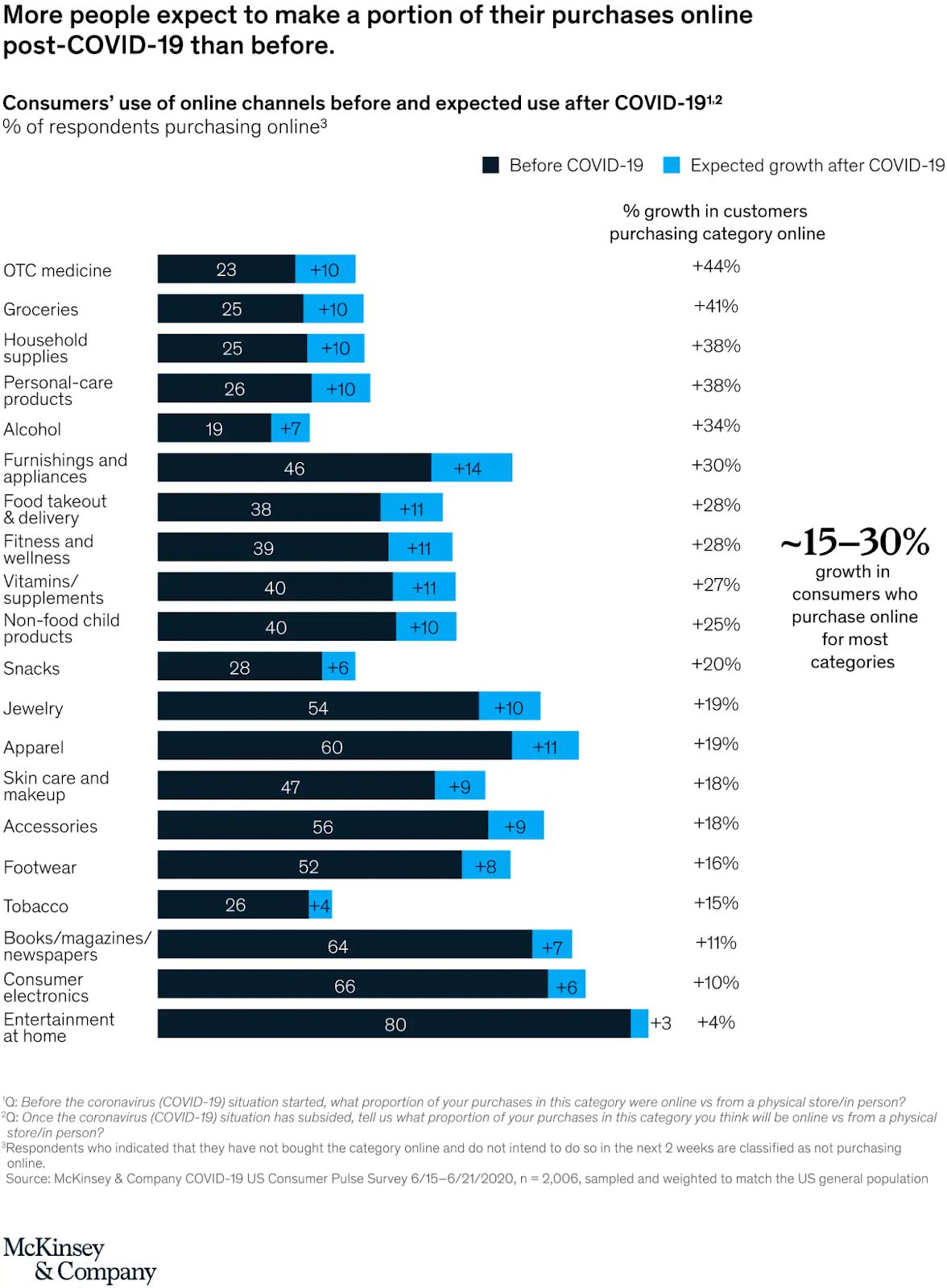Online shopping isn’t just a trend.
It’s here to stay.
More than 55% of consumers prefer to shop online. That’s why store owners should create a digital storefront.
And that’s where ecommerce platforms come in.
But what is a commerce platform?
What are the different types of commerce platforms available? And what are the best ways to choose an ideal solution for your online store and business needs?
In this guide, we’ll explain everything you need to know about commerce platforms and their value to your online business.
Here’s what we’ll cover:
- What is a commerce platform?
- What are the different types of commerce platforms?
- Why you need a commerce platform for your business
- What features should you look for in a commerce platform?
- 6 popular ecommerce platforms
- Final thoughts: what is a commerce platform? (And why is it important?)
What is a commerce platform?
A commerce platform is a type of software that enables users to run an entire online store. Commerce platforms run all kinds of ecommerce operations, from displaying products to payment processing.
Having an ecommerce platform means establishing a digital storefront where potential customers can browse your products, make a purchase, and even interact with live chat agents.
For example, let’s take a look at the world-famous ecommerce website Alibaba.

While that’s only a homepage, Alibaba's storefront is capable of:
- Showcasing limitless product categories.
- Displaying content, such as blogs, images, and FAQs.
- Receiving online payments.
- Offering customer support through live chat or phone.
One commerce solution powers all those capabilities, making it simple for store owners to manage their day-to-day operations. But not all commerce platforms are the same.
That brings us to the next question.
What are the different types of commerce platforms?
There are three main types of ecommerce platforms:
- Software-as-a-service (SaaS).
- Platform-as-a-service (PaaS).
- On-premise platforms.
SaaS ecommerce platforms deliver solutions solely online. That means you have all the tools you need to run an ecommerce store through online software.
StoreBuilder by Nexcess is a great example of a SaaS commerce platform.

PaaS commerce platforms are a bit different. While both SaaS and PaaS platforms offer ecommerce solutions online, PaaS platforms are often open-source.
That means the user doesn’t just have access to the software. They’re able to customize the entire online retail platform as they see fit.
PaaS platforms also include both software and hardware, enabling users to customize an entire app for their purpose.
Adobe Commerce (Magento) is a great example of a PaaS platform. With Magento, you can receive access to unique themes, custom integrations, and extensions to create a platform tailored to your ecommerce business.
Finally, we have on-premise commerce platforms. They get their hosting online but the retailer manages everything in-house. They’re generally used by larger online stores.
Why you need a commerce platform for your business
There’s no getting around the fact that you need a commerce platform to run an online store. However, it’s not just that you need one to create a digital storefront.
You need one to interact with today’s shoppers.
After all, more people expect to shop online after the pandemic, according to McKinsey.

With that said, there are three main reasons why you need a commerce platform for your business:
- Ecommerce platforms are always open for business.
- It’s often affordable to set up and use one.
- Commerce platforms are ideal for both startups and global businesses.
Let’s dig deep into each of these reasons.
An online store is always open for business, whether you’re shopping at work or 3 a.m. That broadens your store’s reach to accommodate different customer behaviors and time zones.
Next, you have to consider that it’s usually much cheaper to invest in a commerce platform than to open a retail store, which can cost anywhere between $2,000–$100,000. That includes rent, business insurance, and permits.
But with commerce platforms, you only have to pay a fraction of those costs, usually through a monthly fee.
Finally, commerce platforms are great for both fledging stores and global businesses.
Enterprises like JCPenney and Barnes & Noble use commerce platforms to offer a digital storefront along with their brick-and-mortar stores.

Whatever your online store’s state, a commerce platform can help you sell products and increase profits and conversions.
What features should you look for in a commerce platform?
Knowing the importance of a commerce platform is the first step in unlocking your online store’s full potential.
But before you can make the right decision, you should know what people are looking for in an ecommerce store.
Generally, online shoppers want three things:
- An eye-pleasing, user-friendly website design.
- An easy shopping experience.
- A personalized experience.
Basically, when a potential customer lands on a webpage, they’re going to make a quick judgment about your brand by what they see.
It’s up to you to provide a welcoming and awesome experience that keeps them coming back.
Accomplishing that goal means choosing the right ecommerce platform that will convince customers to visit and stay on your website.
When choosing a commerce platform, you should look for:
- An inventory management tool to track and update inventory levels.
- Email marketing tools that let you send alerts and stay in touch with customers.
- A customer rewards program tool that helps identify and reward loyal customers.
- Multiple ecommerce store design templates to choose from.
- Shopping cart plugins, APIs, and add-ons to personalize the customer experience.
- Multiple payment options and currencies.
- A dynamic page builder for store content and forms.
Choosing a commerce platform with all those features will help you deliver the type of checkout experience most customers are looking for.
6 popular ecommerce platforms
The commerce platform you choose will ultimately guide your online business’s growth.
Sound intimidating?
Here’s the good news:
We’ve created a list of the six best ecommerce platforms to help you make your decision.
1. Shopify
Shopify is one of the most popular ecommerce platforms available. With nearly four million users, it’s an all-in-one ecommerce solution geared towards small businesses.
Shopify users also can take advantage of ecommerce features like:
- Free 256-bit SSL certificates.
- Hosting with unlimited bandwidth.
- A convenient inventory management system.
As a SaaS solution, Shopify isn’t as customizable as other options. It can also be expensive for small businesses without much starting capital.
Pricing: Starts at $14.44/month when billed annually.
2. WooCommerce
WooCommerce is an ecommerce plugin for the famous content management system (CMS) WordPress. It’s free to download and set up.

Like WordPress, WooCommerce is open-source and completely customizable. It offers other great features like:
- Flexible and secure payments.
- An automated order management dashboard.
- Free and premium extensions, from PayPal to Mailchimp.
WooCommerce is only for WordPress users, so it can be challenging for existing ecommerce sites to make the switch.
Pricing: Free, except for hosting and credit card transaction fees.
3. BigCommerce
With at least 60,000 customers, BigCommerce isn’t as popular as WooCommerce and Shopify. Still, the platform offers built-in search engine optimization (SEO) features and top-of-the-line functionality.
If you opt to use BigCommerce, you can enjoy features like:
- Built-in point-of-sale (POS) integrations with leading providers.
- An easy-to-use page builder.
- Segmented customer groups.
Note that BigCommerce doesn’t provide much scalability for growing businesses. Once you exceed your plan’s annual sales threshold, you’ll need to pay for the upgraded plan.
Pricing: Starts at $29.95/month.
4. Wix
Wix began in 2006 as a drag-and-drop website builder. Recently, the brand ventured into ecommerce, enabling users to develop online stores.
Wix users will appreciate features such as:
- Free SSL certificates.
- Omnichannel inventory management.
- More than 50+ payment gateways.
Wix isn’t as intuitive as other ecommerce platforms. Its stores usually have slow page loading times, which limits their SEO potential.
Pricing: Starts at $27/month.
5. Magento
Magento 1 started in 2007 and has been replaced with Magento 2, a more robust ecommerce platform.
Magento 2 users can rely on awesome features like:
- Open-source flexibility.
- An extensive catalog management platform with unlimited product attributes and dynamic pricing.
- SEO features.
- Mobile-friendly ecommerce options.
Magento has a steep learning curve and is expensive to use, which can be unappealing to small and growing online stores.
Pricing: Custom
6. Nexcess StoreBuilder
StoreBuilder by Nexcess provides the best of both worlds in ecommerce functionality. Users can rely on a drag-and-drop page builder that maximizes their store’s SEO value.

Nexcess also offers hosting and integration with other leading ecommerce platforms like:
- WordPress.
- Magento.
- WooCommerce.
Nexcess users can build a website without any coding or design knowledge. They can also rely on 24/7/365 customer support.
On top of that, StoreBuilder by Nexcess is also one of the most affordable ecommerce options available — starting at just $19/month.
Final thoughts: what is a commerce platform? (And why is it important?)
A commerce platform helps business owners build and manage an online store using an all-in-one solution. Setting up your online store for success relies on the platform you choose.
If you’re still weighing your options, why not consider Nexcess StoreBuilder?
Try StoreBuilder by Nexcess today for only $5 to see how well our platform works for you.

